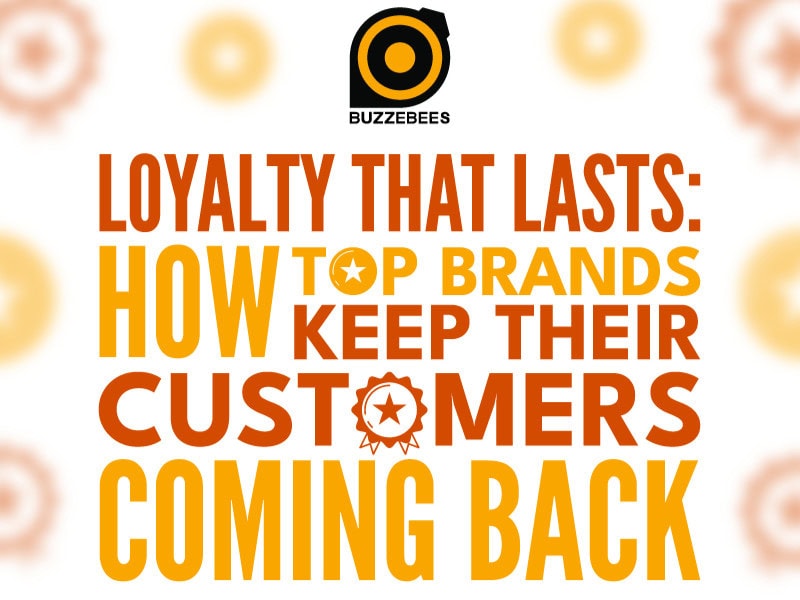It is usually challenging to keep consumers interested and loyal to a company, especially in a market where they have countless options. Customer loyalty is one of the most valuable assets in the modern business landscape. This is why many brands implement client retention tactics, such as loyalty programs, to boost the effects of competitive prices and product quality.
Loyalty programs have been rising in popularity among existing strategies, with a projected 17.5% annual growth rate of the market. From supermarkets and department stores to food and beverage establishments, reward programs has constantly evolved to match the shifting expectations of modern consumers.

Customer Retention Strategies from Top Brands
The leading brands in the Philippines go beyond transactional rewards to create long-term value for members and strengthen their position in customers’ daily lives. Businesses can learn a lot from these methods, particularly:
- Provide Convenience and Accessibility
With over 4,000 partner stores nationwide, SM Advantage Card (SMAC) is seamlessly integrated into the daily routines of countless Filipino consumers. The program feels more like a necessary component of regular shopping because members have access to a wide range of retail establishments where they can earn and use points.
Incorporating rewards into routing operations can guarantee recurring participation while upholding the importance of being a devoted member.
- Tiered Rewards for Greater Engagement
Tiered systems tap into human psychology by appealing to a person’s sense of achievement and exclusivity. Consumers often feel valued and acknowledged for their purchases, creating an emotional bond that goes beyond simple financial gains.
For instance, SM offers SMAC Start, a free introductory tier that allows customers to start earning and redeeming points as they shop at the brand’s stores and retail partners. They may progress to the standard SMAC membership and then to the elite tier SMAC Prestige, where members are automatically upgraded once they spend at least PHP 150,000 cumulatively within 12 months at SM stores and retail partners.
- Foster Coalition Loyalty
Robinsons’ Go Rewards ensures that customers are always engaged by enabling point earning and redemptions across diverse shopping destinations—supermarkets, convenience stores, and even hardware outlets.
This coalition approach to loyalty expands the ecosystem of benefits and encourages customers to stick with the business’s brands rather than looking for alternatives. Making the incentives system essential for a variety of lifestyle requirements can significantly strengthen client retention.
- Embrace Gamification
Gamification involves the use of game-like elements and mechanics into traditional loyalty frameworks to make the customer experience more engaging. It can also mean incorporating games or challenges in the app or website that customers should complete for rewards.
Popular e-commerce platforms like Shopee and Lazada have incentivized this feature by offering material rewards and vouchers for future purchases. Customers tend to stay longer because of these games and the potential of winning items.
- Build Emotional and Practical Value
Ultimately, successful loyalty programs combine emotional and practical benefits. Beyond discounts and points, customers value exclusive access, personalized offers, and experiences that make them feel special.
Leading brands foster a sense of belonging beyond the transaction by balancing tangible rewards with emotional connections. When customers feel rewarded and valued, their loyalty transforms from passive participation into active advocacy—a key factor sustaining long-term growth.
How to Start a Loyalty Program
Launching a loyalty program requires thoughtful planning and execution. Here is a quick guide illustrating what companies need to do to build lasting loyalty.
- Design and Discovery
A project remains a vision without clear objectives. So, business leaders must ask themselves, what does the business want to achieve?
Goals may range from increasing repeat purchases and boosting customer lifetime value to driving referrals or enhancing brand awareness. At this stage, stakeholder input and customer research are crucial to ensuring the program meets both business and customer needs.
Equally important is identifying key performance indicators (KPIs) that will measure success. Metrics such as program sign-ups, engagement rates, and frequency of repeat purchases will serve as benchmarks for evaluating progress.
- Strategy and Planning
Once the foundation is set, businesses must map customer journeys and create member personas to design a relevant program structure. This may include defining earning-and-redemption rules, outlining reward tiers, and maintaining regulatory compliance.
At this stage, a well-documented roadmap covering budget, timeline, and resources becomes the step-by-step guide for smooth implementation.
- Development
The program takes shape in the development stage. Businesses can adopt a trusted Philippine rewards app, build tiered systems, and create engaging user interfaces for apps or portals. Integration with existing systems ensures seamless functionality across customer touchpoints.
Rigorous testing at this stage is non-negotiable because companies need to ensure the program works flawlessly from both technical and customer experience standpoints to minimize friction at launch.
- Launch
When it is time to launch, the focus shifts to execution. This includes deploying the program to production, migrating data if necessary, and training employees in program mechanics. Staff should know how to explain benefits, handle sign-ups, and resolve customer inquiries effectively.
Digital and offline marketing campaigns should also accompany the launch to generate excitement and awareness. The more customers understand the value of the program, the more likely they are to enroll and engage actively.
- Ongoing Optimization
The launch is only the beginning. Continuous monitoring of KPIs and customer feedback helps identify strengths and areas for improvement. Running seasonal campaigns, introducing fresh rewards, and experimenting with gamification can sustain long-term engagement.
Most importantly, programs must evolve with customer needs. What works today may not work tomorrow, and businesses must be agile in refining their loyalty approach to remain relevant.
Make Lasting Customer Connections with Buzzebees
Customer loyalty goes far beyond short-term promotions. It is a sustainable strategy that fuels growth, strengthens brand relationships, and turns buyers into advocates. However, sustaining customer relationships is one thing; starting a loyalty program is another—businesses need a partner they can trust.
With a proven track record in loyalty program design and management, Buzzebees helps enterprises build strategies that go beyond simple rewards to create meaningful engagement. Our experts can empower your business to connect with your customers to a deeper level.Reach out today and transform your customer relationships into lasting loyalty!


